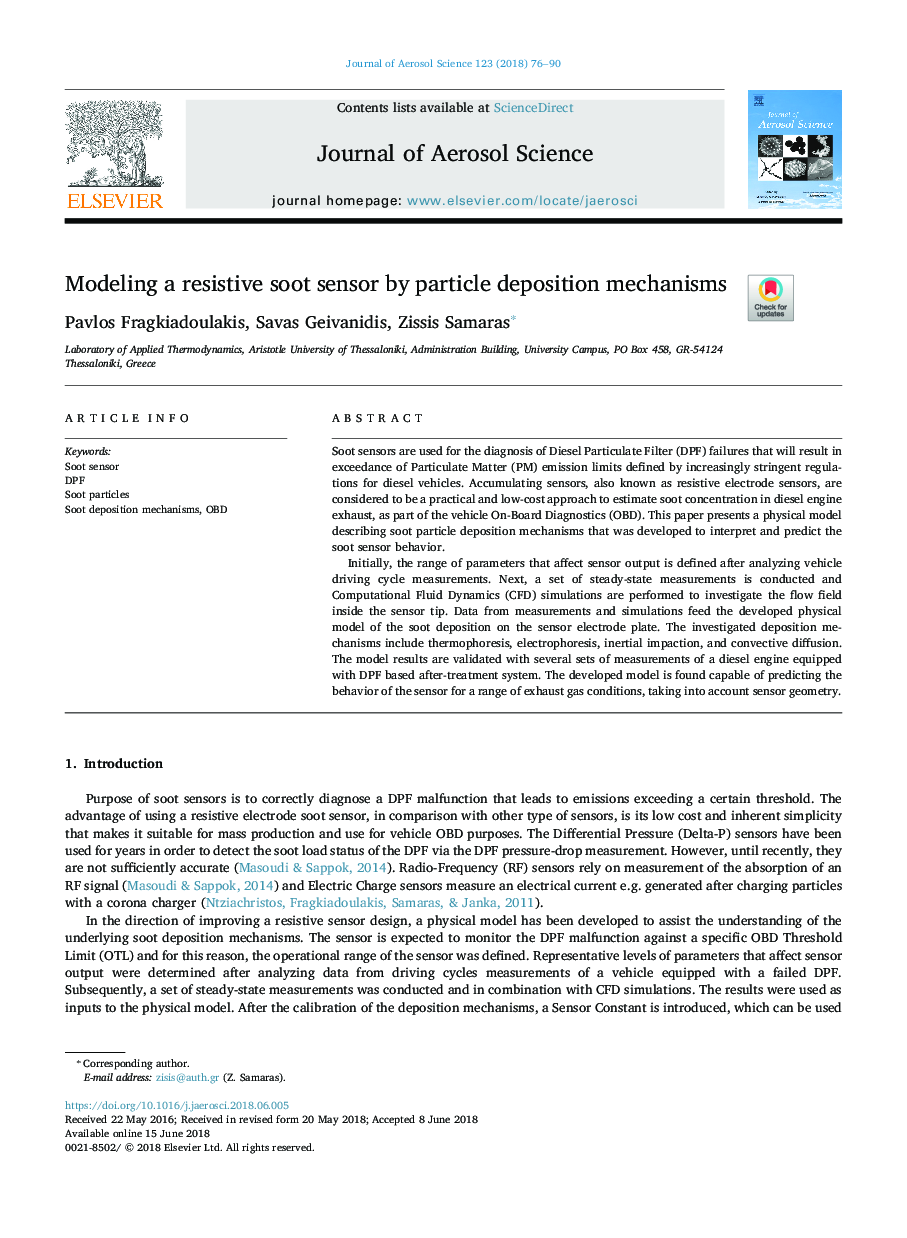| Article ID | Journal | Published Year | Pages | File Type |
|---|---|---|---|---|
| 8865217 | Journal of Aerosol Science | 2018 | 15 Pages |
Abstract
Initially, the range of parameters that affect sensor output is defined after analyzing vehicle driving cycle measurements. Next, a set of steady-state measurements is conducted and Computational Fluid Dynamics (CFD) simulations are performed to investigate the flow field inside the sensor tip. Data from measurements and simulations feed the developed physical model of the soot deposition on the sensor electrode plate. The investigated deposition mechanisms include thermophoresis, electrophoresis, inertial impaction, and convective diffusion. The model results are validated with several sets of measurements of a diesel engine equipped with DPF based after-treatment system. The developed model is found capable of predicting the behavior of the sensor for a range of exhaust gas conditions, taking into account sensor geometry.
Keywords
Related Topics
Physical Sciences and Engineering
Earth and Planetary Sciences
Atmospheric Science
Authors
Pavlos Fragkiadoulakis, Savas Geivanidis, Zissis Samaras,
